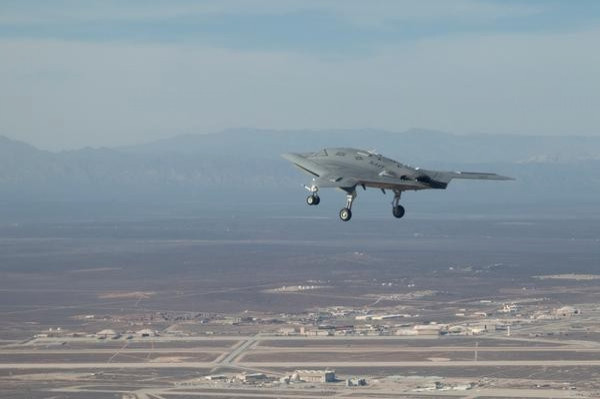U.S. Officials Believe Malfunction, Not Iranians, Downed Drone

The unmanned U.S. drone Iran said Sunday it had captured was programmed to automatically return to base even if its data link was lost, one key reason that U.S. officials tell Reuters the drone likely malfunctioned and was not downed by Iranian electronic warfare.
U.S. officials have been tight-lipped about Iranian claims that its military downed an RQ-170 unmanned spy plane, a radar-evading, wedge-shaped aircraft dubbed the Beast of Kandahar after its initial sighting in southern Afghanistan.
The U.S.-led NATO mission in Afghanistan said the Iranians might be referring to an unarmed reconnaissance aircraft that disappeared on a flight in western Afghanistan late last week. But they declined to say what type of drone was involved.
A U.S. government source, who spoke on condition of anonymity, said the plane was on a CIA mission. The CIA and Pentagon both declined to comment on the issue.
The incident came at a time of rising tensions between Iran and the West over Tehran's nuclear program. The United States and other Western nations tightened sanctions on Iran last week and Britain withdrew its diplomatic staff from Tehran after hard-line youths stormed two diplomatic compounds.
The United States has not ruled out military action against Iran's nuclear facilities if diplomacy fails to resolve a dispute over the program, which Washington believes is aimed at developing atomic weapons.
The RQ-170 Sentinel, built by Lockheed Martin, was first acknowledged by the U.S. Air Force in December 2009. It has a full-motion video sensor that was used this year by U.S. intelligence to monitor al Qaeda leader Osama bin Laden's compound in Pakistan ahead of the raid that killed him.
Former and current military officials familiar with the Sentinel said they were skeptical about Iranian media reports that Iran's military brought down one of the drones in eastern Iran, especially since Tehran has not released any pictures of the plane.
POSSIBLE 'CATASTROPHIC' MALFUNCTION
The aircraft is flown remotely by pilots based in the United States, but is also programmed to autonomously fly back to the base it departed from if its data link with U.S.-based pilots is lost, according to defense analyst Loren Thompson, who is a consultant for Lockheed and other companies.
Other unmanned aircraft have a similar capability, including General Atomics' Predator drone, industry sources said.
The fact that the plane did not return to its base suggests a catastrophic technical malfunction, agreed one industry executive familiar with the operation and programming of unmanned aerial vehicles.
U.S. officials say they always worry about the possibility of sensitive military technologies falling into the hands of other countries or terrorist groups, one reason U.S. planes quickly destroyed a stealthy helicopter that was damaged during the bin Laden raid in Pakistan.
Many classified weapons systems have self-destruction capabilities that can be activated if they fall into enemy hands but it was not immediately clear if that was the case this time.
In this case, the design of the plane and the fact that it had special coatings that made it nearly invisible to radar were already well documented. If it survived a crash, all on-board computer equipment was heavily encrypted.
Lockheed confirmed that it makes the RQ-170 drone, which came out of its secretive Skunk Works facility in southern California, but referred all questions about the current incident to the Air Force.
Thompson and several current and former defense officials said they doubted Iranian claims to have shot the aircraft down because of its stealthy features and ability to operate at relatively high altitudes.
Iran was also unlikely to have jammed its flight controls because that system is highly encrypted and uses a direct uplink to a U.S. satellite, they said.
The U.S. Air Force has experienced declining attrition rates with most of its unmanned aircraft. However this is a relatively new aircraft and there aren't many in the fleet, which means that malfunctions and mistakes are more likely to occur, Thompson said.
One former defense official familiar with the RQ-170 and other unmanned aircraft said he absolutely agreed that the aircraft was not lost due to any action by Iran.
Exact details about the drone remain classified but industry insiders say the plane flies at around 50,000 feet and may have a wing span of up to 90 feet. Its shape harkens back to the batwing design of the radar-evading B-2 bomber.
(Editing by Jackie Frank)
© Copyright Thomson Reuters 2024. All rights reserved.





















